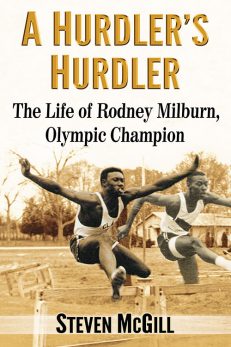The Sporting Goods Industry
History, Practices and Products
$29.95
In stock
About the Book
The last 20 years have brought remarkable growth and change to the sporting goods industry. The term “sporting goods” once comprised only equipment like golf clubs, basketballs and tennis rackets. With the recent explosion in apparel and footwear sales, though, the industry has moved far beyond equipment manufacture. Skyrocketing marketing budgets have resulted in top-name athletic endorsements and relentless branding, and athletic companies’ logos are now easily among the most recognizable corporate trademarks in the world.
This work, both a valuable text for students and an indispensable handbook for professionals, offers insight into every major function of the sporting goods industry. Chapters cover the development of the industry; the industry’s structure and size; manufacturers’ products and market shares; channels of distribution; sports medicine and product liability; sports marketing, including licensing, endorsement and sponsorship; the use of traditional media and market research; sales trends and profitability; and e-commerce. Each chapter includes discussion questions and exercises. Appendices provide directories of sporting goods vendors, retailers, and multi-sport media and trade associations.
Instructors considering this book for use in a course may request an examination copy here.
About the Author(s)
Bibliographic Details
Richard A. Lipsey
Foreword by Thomas B. Doyle
Format: softcover (7 x 10)
Pages: 177
Bibliographic Info: appendix, notes, bibliography, index
Copyright Date: 2006
pISBN: 978-0-7864-2718-5
eISBN: 978-1-4766-1313-0
Imprint: McFarland
Table of Contents
Acknowledgments v
Foreword by Thomas B. Doyle 1
Preface 3
1. Historical, Cultural, and Technological Perspectives on the Industry 5
2. Structure and Size of the Industry in the United States 19
3. Sporting Goods Vendors: Products, Market Size, Organizational Structure, and Market Segmentation 36
4. Channels of Distribution: Consumer Retail, Consumer Online, Team Dealers, and Distributors 49
5. Sports Medicine and Product Liability 66
6. Sports Marketing: Licensing, Endorsement and Sponsorship 71
7. Broadcast and Print Advertising and Market Research 89
8. Financial Dimensions: Sales Trends and Profitability 102
9. E-Commerce: Vendors, Brick-and-Mortar Retailers, E-Tailers 115
Appendix: Leading Vendors, Retailers, and Multisport Media and Trade Associations 129
Bibliography 161
Index 163
Book Reviews & Awards
“fascinating topics”—ARBA; “worth having…[the author] is very familiar to many involved in [the industry]…he has a long background in industry research”—Sporting Goods Business; “most useful”—BottomFeeder (University of Western Ontario); “charts the course of what used to be an equipment-based industry that has grown to include apparel, footwear and ‘lifestyle’ products that are amongst the most recognizable in the global marketplace…extensive list of leading vendors, retailers, media and trade associations”—Reference & Research Book News.





